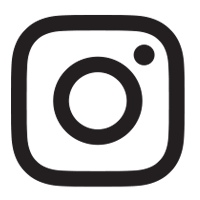Method of Delivery:
Online: this course is offered in distance education format. There are no synchronous meetings.
Course Synopsis:
This course provides a historical survey of modern human-animal relationships and the contradictions that characterize them. Topics may include: hunting and sporting, horses and nineteenth-century cities, natural history and the zoo, history of veterinary medicine, twentieth-century animal sports, the birth of industrial animal agriculture, animals as biotechnology, anti-cruelty movements, petkeeping and consumerism, and animal figures in popular culture. The thematic or geographic focus of the course may vary according to the expertise of the instructor.
Pre-Requisite(s):
2.00 credits
Co-Requisite(s):
None
Restriction(s):
None
Learning Outcomes
By the end of this course, you should be able to:
- Describe the historical development of and variation in human-animal relationships;
- Explain your understanding of thematic interpretations of history by problematizing various political concepts (i.e., anthropocene, human, animal, agency and power, nature and wilderness, progress and improvement, the agrarian myth) as well as categories for interpreting nonhuman animals (i.e., pet, pest, predator, game, worker, commodity, research model, production unit, biotechnology, charismatic megafauna, environmental resource, and endangered species);
- Write essays that demonstrate the ability to isolate and synthesize key historical examples, extract lessons from that history, and make connections to broader themes of the course;
- Engage in independent research to explore broader themes of the course with respect to human-animal relationships;
- Locate relevant primary and secondary sources documenting historical animals from academic and non-academic literature using a traditional library and online archives;
- Summarize, critique, and contextualize historical primary sources to better understand aspects of the interspecific past;
- Articulate the power and limits of human agency with respect to nonhuman animals; and the power and limits of animals’ agency with respect to humans
- Describe how to weigh one’s own ethics against those of others, including institutions, businesses, and political groups; and
- Engage in a constructive dialogue with your peers about controversial topics and one’s process of learning about them.
Methods of Evaluation and Weights:
Introductions & Webquest Discussion - 5%
Online Discussions (2) - 30%
Short Essay - 20%
Primary Source Presentation - 15%
Final Exam (Take-home) - 30%
Texts Required:
Arnold Arluke and Robert Bogdan, Beauty and the Beast: Human-Animal Relations as Revealed in Real Photo Postcards, 1905-1935 (Syracuse University Press, 2010). ISBN: 9780815609810
Dan Flores, Coyote America: A Natural and Supernatural History (Basic Books, 2017). ISBN: 9780465093724
Jonathan Safran Foer, Eating Animals (Back Bay Books, 2010). ISBN: 9780316069885
PLUS a selection of chapters, articles, videos, and other assigned materials available through our Courselink site.
**Please note: This is a preliminary web course description only. The department reserves the right to change without notice any information in this description. The final, binding course outline will be distributed in the first class of the semester.**





